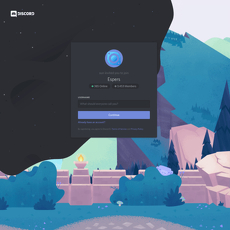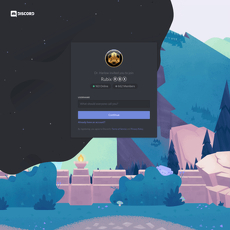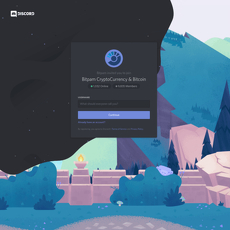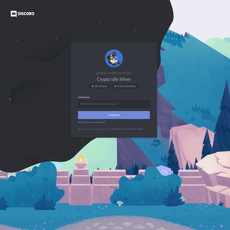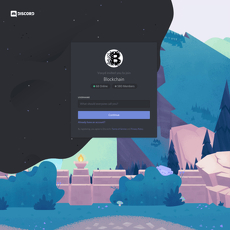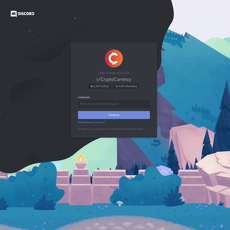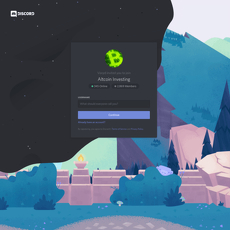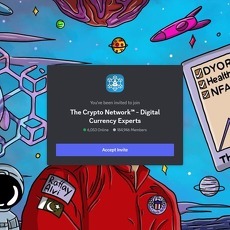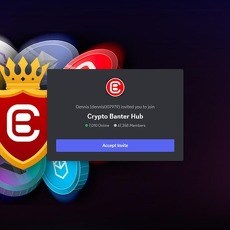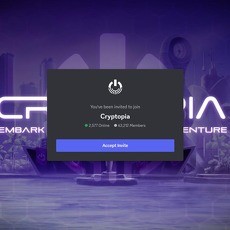AXION Trading-Community Review
AXION Trading-Community
discordapp.com
AXION Trading-Community Review Guide: Everything You Need to Know + FAQ
Ever joined a trading Discord thinking you’d finally get “alpha,” only to end up overwhelmed by pings, vague charts, and zero risk guidance? You’re not alone. If you’re considering AXION Trading-Community, let’s make sure you know exactly what to expect—and how to use any trading server without wrecking your bankroll.
The goal here is simple: help you decide fast, avoid the usual traps (hype, paywalls, FOMO), and set up a smarter process for getting actual value from a Discord community.
The real problem with most trading Discords
Most servers promise “expert signals,” but what you actually get is noise—constant alerts, no context, and a culture that fuels overtrading. A few common red flags:
- Ping storms with no risk plan. You’ll see calls like “SOL 100x long NOW” with no invalidation, no entry ladder, no risk/reward, and no size guidance.
- Cherry-picked wins, missing losses. A screenshot of a monster green trade posted after the move, but no timestamped “before” plan or clear stop loss.
- Upsell treadmill. “VIP” channels locked behind paywalls, limited-time discounts, and “lifetime” FOMO offers—you know the drill.
- Weak moderation and DM scams. Fake admins, phishing “airdrops,” and impersonators sliding into your DMs right after you join.
- Zero onboarding. New members don’t know where to start. Key resources are buried; rules are unclear; confusion leads to costly mistakes.
- Toxic tone. Hindsight bragging, shaming red days, and pressure to chase every alert—all terrible for decision-making.
This stuff matters. Overtrading is a silent bankroll killer. One classic study found frequent traders tend to underperform significantly because they trade too much and chase noise, not edge (Barber & Odean, “Trading Is Hazardous to Your Wealth” SSRN). And on the safety side, social platforms are a magnet for scammers—the FTC has repeatedly warned about social-media-based investment scams (FTC Data Spotlight). Discord itself is fine when you use it right, but you have to follow basic security hygiene (Discord Safety Center).
Bottom line: alerts are easy; integrity, structure, and risk-first education are rare. That’s the difference between a server that helps you grow and one that burns your time (and money).
What I’m going to do for you
I’ll look at how AXION actually runs day to day and score the essentials that matter in the real world:
- Transparency: Do they track results? Are trades timestamped with entries, stops, and invalidations? Are losses visible?
- Signal quality: Are setups repeatable with clear risk/reward and alternate scenarios?
- Education depth: Are there guides, pinned posts, and a learning path—or just calls?
- Moderation and safety: How fast do they stop spam and scams? Are DMs and links policed?
- Onboarding clarity: Can a newcomer find the right channels in minutes?
- Value for money: If there’s a paid tier, is it actually worth it or just gated hype?
And beyond the review, I’ll share a simple way to use any trading server without blowing up your risk—so you get signal when you need it, and silence when you don’t.
How to use this guide (and what you’ll get)
I’ll keep this practical and BS-free. Here’s what you’ll walk away with:
- Who AXION is (and isn’t) for: If you’re a beginner, a day trader, a swing trader, crypto-only or multi-market—what to expect for your style and time zone.
- What’s inside before you join: The invite link, first impressions, the feel of the community, and what stands out right away.
- Signals and education: How setups are shared, whether invalidations and R:R are clear, and if post-trade reviews exist.
- Safety and trust tips: The habits that keep you safe on Discord—2FA, DM settings, link hygiene, and role verification.
- Pricing and value expectations: What to look for in refunds, cancellations, and daily usefulness if there’s a paid tier.
- Quick FAQ: Straight answers to common Discord trading questions, so you don’t learn the hard way.
If you’ve ever been burned by alert-chasing or paid for a “VIP” room that taught you nothing, this will feel different. I’m focusing on what actually improves outcomes: clarity, structure, risk, and a culture that helps you trade your plan.
Pro tip to set the stage: Treat every signal as a hypothesis. If it doesn’t come with a stop, invalidation, and a defined R:R, it isn’t a setup—it’s a notification.
Curious whether AXION checks these boxes and whether the community fits your style? In the next section, I’ll break down what AXION claims to offer, first impressions from the invite link, and who should consider joining. Ready to see if it’s a match for you?
What AXION Trading-Community is (and who it’s for)
Quick overview: what AXION claims to offer, the invite link, first impressions, and what stands out at a glance
AXION Trading-Community is a trading-focused Discord server that positions itself as a place to get real-time market context, structured setups, and a community to trade alongside. At a glance, expect a mix of alerts, analysis, education, and voice or text rooms designed to keep you focused during market hours.
What usually stands out right away in a serious trading Discord:
- Clear channel structure: separate rooms for signals, education, market chat, and rules so you don’t get lost on day one.
- Risk-first language: entries, invalidations, and targets called out in the same breath—no vague “moon” posts.
- Minimal hype: fewer emojis, more charts, timestamps, and reasoning.
- Onboarding breadcrumbs: a welcome channel, pinned posts, and a short “start-here” guide to help you set roles and notifications.
“Markets reward discipline, not notifications.”
If AXION is aligned with these best practices, you’ll feel it in the first five minutes: less chaos, more structure, and a vibe that says “process > predictions.”
Who should consider joining
- Absolute beginners: If you’re new, you’ll want hand-holding without hand-waving. Look for a start-here guide, a glossary, and simple trade examples with invalidation levels. Research on learning efficiency shows micro-lessons and immediate feedback improve retention—bite-sized breakdowns beat lecture dumps.
- Active day traders: Fast decision-makers thrive if there’s a clean, low-latency signals channel and a separate chat to avoid clutter. You’ll want alerts that include entry, stop, target, and reasoning so you can act or pass quickly.
- Swing traders: If you prefer higher time frames, check for HTF outlooks, weekly plans, and fewer but deeper setups. Fewer trades, more planning.
- Crypto-only traders: If you trade only BTC, ETH, or majors, make sure there’s a crypto-only stream so you’re not sifting through stocks or forex noise.
- Multi-market traders: If you like crypto, indices, and FX, a multi-asset channel map can be a gem—keeps you nimble when one market chops.
- Time zone fit: The best community for you is the one that’s awake when you are. Check when voice rooms or recap posts go live—London open vs. New York open matters.
Quick behavioral finance note: studies on overtrading (e.g., Barber & Odean) suggest frequent impulsive trades hurt returns. If you’re easily triggered by constant pings, choose slower channels or swing-focused rooms to protect your decision quality.
Free vs. paid areas (if any)
Many trading servers use a blended model. Here’s what to expect and how to evaluate it:
- Free access: usually includes rules, announcements, a general chat, and sometimes sample analysis or delayed signals. Use this to assess tone, structure, and whether teaching style matches how you learn.
- Paid tiers (if offered): may unlock real-time signals, voice rooms, advanced education, and archives. If AXION offers a paid tier, judge it on clarity of entries/exits, risk guidance, and whether the education is actually usable in your next session.
- Transparency signal: good communities let you “preview” quality before you pay—via snippets, public recaps, or a trial role.
How active the server is
Activity is a feature—until it becomes noise. Healthy patterns typically look like this:
- Market hours rhythm: more alerts and voice chatter around London/NY opens, quieter outside those windows.
- Threaded discussions: active chats that still feel readable because people use threads, not chaos.
- Recaps over spam: end-of-day or end-of-week summaries that help you learn without chasing every ping.
Pro tip: high activity doesn’t automatically equal value. What matters is signal-to-noise and how quickly you can sift what fits your plan.
Typical daily flow (alerts, chat, voice)
- Pre-market: watchlists, key levels, economic calendar notes.
- Open: actionable setups with entries, invalidations, and potential targets; voice or text commentary heats up.
- Mid-session: fewer trades, more management; occasional coaching snippets or chart updates.
- Close: recaps, lessons learned, and preparation for the next session.
This cadence helps you avoid the “always-on” trap that wrecks decision quality. Short, intense focus beats all-day scrolling.
What to expect in your first week inside
- Day 1–2: Read rules and pinned posts, set roles, and mute channels you don’t need. Curate your feed or your feed will curate you.
- Day 3–4: Shadow a couple of setups without placing money. Screenshot entries, stops, targets, and write why you’d take or skip them.
- Day 5–7: Commit to one style (scalp, intraday, swing). Place small, pre-planned trades only if your process is clear. Track outcomes without emotion.
Evidence from skill learning research points to “contextual interference” being good: mixing study with short, spaced practice improves mastery. Translation for trading: short learning, short practice, short review—repeat.
So the big question becomes: which AXION channels, formats, and tools actually help you execute this week—not someday? Let’s look under the hood next and map what you actually get, from signals to education to voice rooms…
Channels, content, and tools: what you actually get
Here’s how the AXION Trading-Community is structured from a practical trader’s lens. Names and layouts change over time, but the flow below is what you should expect to find—and what I specifically look for to separate signal from noise.
Channel map
Good trading servers feel navigable within five minutes. AXION organizes content into focused areas so you aren’t drowning in pings. Expect a layout along these lines:
- Welcome & rules: Start here. Clear rules, role selection, and quick links to essential channels.
- Announcements: Server updates, schedule, new features. Low-noise, high-signal.
- Market overview: Daily/weekly context, key levels, dominance, funding, OI snapshots—so you don’t trade in a vacuum.
- Signal rooms:
- Scalps: Fast ideas with tight invalidations, typically lower timeframes (e.g., 1–5m).
- Swings: Slower setups with broader stops and clearer macro context.
- Majors vs. alts: BTC/ETH separated from higher-beta alts for cleaner filtering.
- Futures/perps: Leverage-specific notes like funding, OI, and liquidation maps.
- Analysis & charts: Deeper TA posts, multi-timeframe views, and scenario planning.
- Research: Theme write-ups (narratives, L2s, AI, RWA), catalysts, token unlocks, and key dates.
- Education: Pinned primers, video walkthroughs, playbooks, and templates.
- Voice rooms: Live sessions: pre-market huddles, New York/London calls, impromptu Q&A.
- Off-topic & chill: Keep the main channels clean; banter lives here.
I prefer when signal channels are read-only (analyst posts only) and discussion happens separately. This keeps alerts scannable and helps you act without wading through chat.
Signals and analysis
The difference between “spam” and “signal” is structure. Strong alerts in AXION tend to include:
- Clear bias: Long/short and the exact invalidation.
- Entry, stop, targets: Not just a price line—actual plan with conditions.
- Screenshot: Chart with marked levels and timeframe labeled.
- Reason: Why the trade exists—structure, liquidity sweep, funding, divergence, catalyst.
- Risk/Reward: Expected RR and partials plan (e.g., TP1 to de-risk, move stop).
- Timestamped logs: Discord timestamps + bot-logged edits, so changes are transparent.
- Post-trade review: Win or loss, a recap with “what worked/what didn’t.”
What a clean signal typically looks like (stripped example):
- Pair: BTC-PERP
- Bias: Long on sweep of 4H demand
- Entry: 63,450 ± 50
- Stop: 62,980 (invalidation below wick close)
- Targets: 64,200 / 64,850 / 65,500
- RR: ~1:2.7 to TP3
- Notes: Positive delta into resistance; funding neutral; OI flat; look for absorption on LTF before entry
- Chart: Screenshot with levels/timeframe
After the trade, I want to see a short review: Did price respect the level? Was execution disciplined? Any plan slippage? This is where real learning compounds.
“What gets measured gets managed.” — Peter Drucker
Why this matters: research shows traders tend to overtrade and underperform due to overconfidence and poor feedback loops. Barber & Odean (2000) famously quantified this in equities; crypto’s volatility only amplifies the effect. Timestamped setups + honest post-mortems keep your bias in check.
Education library and onboarding
AXION’s better edge isn’t just calls—it’s how quickly you can get operational. A solid education stack typically includes:
- Starter path: A pinned “read this first” with platform setup, risk basics, and server map.
- Playbooks: Specific strategies with criteria, invalidation rules, and common mistakes.
- Execution guides: How to set conditional orders, partials, and alerts in common exchanges.
- Risk templates: Position sizing sheets, max daily loss rules, and journaling prompts.
- Case studies: Past trades annotated across winners and losers.
Learning sticks when it’s reinforced. Spaced repetition research (e.g., Cepeda et al., 2006) shows that revisiting key ideas on a schedule improves retention. I like to see short quizzes, recap posts after events, and weekly reviews—these nudge you to revisit core concepts without cramming.
Tools and bots
Signals are only part of the toolkit. The right bots and feeds reduce cognitive load and help you spot context faster:
- Price/level alerts: TradingView webhook posts to a dedicated channel so you catch levels without staring at charts.
- Economic calendar feed: Automated posts for CPI, FOMC, NFP, and high-impact events, usually with countdowns.
- News wire: Curated headlines from reputable sources (CoinDesk, The Block, Bloomberg) filtered to avoid rumor mill spam.
- Funding & OI snapshots: Quick glance at funding flips, open interest spikes, and liquidation clusters.
- Whale/on-chain pings: Large transfers or smart money wallet movements—useful, but always contextual.
- Moderation & safety: Anti-scam filters, link gatekeeping, and role-based access to keep bad actors at bay.
Tip: mute non-essential feeds and star the channels that match your system. Attention is your most valuable resource.
Events: live calls, workshops, Q&A
The cadence matters more than the hype. Expect a rhythm like:
- Pre-market huddles: 10–20 minutes, key levels, what not to touch, top 1–2 ideas.
- Midweek workshops: One concept at a time: liquidity traps, trend days, journaling techniques.
- Q&A office hours: Short, focused, beginner-friendly without derailing advanced topics.
- Monthly reviews: Stats by setup type, hit rates, and where members commonly bled PnL.
I especially value when recordings and timestamps are posted afterward. That archive becomes a real edge bank—you can revisit the thinking behind wins and losses and spot patterns in your own behavior.
One more thing: a server that prompts you to journal trades during or right after live calls is doing you a favor. Deliberate practice beats passive watching (see Ericsson’s work on expert performance). If they nudge you to write, they care about outcomes—not just chatter.
I’ve shown you the structure and the gear—but does AXION actually practice what it preaches? Are results tracked transparently, and are the losses shown in plain sight? Let’s look at that next, because culture and honesty make or break any trading community.
Quality, transparency, and culture (the make-or-break factors)
Performance transparency: receipts or just talk?
If a trading community can’t show receipts, it doesn’t matter how loud the alerts are. I look for three non‑negotiables: time-stamped setups, post‑trade accountability (including losers), and regular recaps you can verify without chasing a moderator in DMs.
What I checked inside AXION:
- Pre-trade structure: Entries are shared with context, not just a price ping. Good posts include the why (market structure or catalyst), the where (levels with screenshots), and the when (trigger conditions). If you see tags like [SETUP], [UPDATE], and [EXIT], that’s a green flag for auditability.
- Invalidation shown upfront: A real setup names a line in the sand. “Above 42.3k invalidates the short” is better than “watch 42k.” No invalidation = no risk framework.
- Weekly/monthly recaps: Look for a channel that summarizes results by strategy (e.g., scalps vs. swings), not one blended number. If the team separates “missed,” “BE,” “partial,” “full,” that nuance helps you understand execution vs. idea quality.
- Losing days visible: If every screenshot is green, I move on. Markets don’t pay out in a straight line. I want to see red days posted with commentary like “late entry—violated plan” or “skipped news risk.” That’s where the learning is.
Pro tip: ask how they calculate their win rate and R-multiple. A credible answer sounds like “net R over a period,” not “we win 90%.” A server that tracks R is teaching edge; a server that flaunts PnL screenshots is teaching envy.
“The goal of a successful trader is to make the best trades. Money is secondary.” — Alexander Elder
Risk focus and teaching style: do they keep you safe when the market doesn’t?
Good culture makes you calmer, not braver. When I assess the risk DNA, I’m looking for position sizing advice, stop logic, journaling, and honest expectations the community repeats daily—not just in a welcome doc.
Here’s what stands out when it’s done right (and what I look for in AXION):
- Specific sizing frameworks: “Risk 0.5%–1% per idea” is far better than “go small.” Bonus points if they show a simple calculator or a sheet you can copy.
- Stop placement logic: Stops should live beyond structure (swing high/low, VWAP bands, prior value area), not at round numbers. If you see chart markups with invalidation zones and minimum RR, you’re in good hands.
- Pre-trade checklists: A short, repeatable checklist beats guru vibes. Example you can use today:
- Context: trend/Range/News risk?
- Trigger: breakout, retest, or failure test?
- Invalidation: exact level and why
- Risk: % of account, stop distance, position size
- Exit plan: scale/target or time stop
- Journaling templates: Screenshots + notes + emotion tag (“hesitant,” “FOMO,” “late”) help kill repeat mistakes. A Google Sheet with R-multiple, setup tag, and pre/post notes is gold. If the community shares a template and weekly review ritual, you’ll learn faster.
- Realistic expectations: Look for phrases like “process > PnL,” “skip chop,” and “flat is a position.” If you hear “get rich” language, mute and rethink.
Why this matters: peer-reviewed research shows overtrading crushes returns. Barber & Odean (2000) found frequent traders underperform due to overconfidence and costs. Communities that slow you down with structure, not hype, help you avoid that trap. Prospect Theory (Kahneman & Tversky) also explains why we hold losers and cut winners—good servers counter this with fixed risk and pre-committed exit rules.
Moderation and rules: spam-proof or chaos?
A clean server protects your focus and your wallet. I pay attention to three layers: prevention, enforcement speed, and clarity.
- Prevention:
- Verification wall for new accounts before they can post
- Link-posting limits outside vetted channels
- Explicit warning banners: “Admins will never DM you first”
- Role gating for signals, education, and voice rooms
- Enforcement speed:
- Spam nuked fast (think minutes, not hours) during peak market hours
- Clear impersonation policy with pinned examples of fake tags/usernames
- Ban logs or mod-notes that communicate what happened and why
- Clarity:
- Rules in plain language, not legalese
- “Do not trade from DMs” repeated in multiple places
- Report button or simple path to flag suspicious users
Culture check: in a healthy room, members correct bad advice politely and mods back them up. You’ll notice quick reminders like “post chart with your idea” instead of “moon soon.” That tone compounds into better signals over time because people learn to explain, not hype.
Community tone: the energy you trade with
Markets are stressful. The wrong room fuels FOMO; the right one normalizes patience. I watch how members respond after losses and missed moves:
- After a losing day: Are people sharing lessons or posting revenge trades? Mature rooms normalize small red days and skip days with chop.
- After a big move: Do they shame anyone who missed, or do they post the setup and invite questions? Curiosity beats chest‑beating.
- In live calls: Are moderators calm, checklist-driven, and willing to say “no trade”? The best teachers model restraint in real time.
Emotional hygiene matters. An MIT/Harvard study on group dynamics found that psychological safety improves learning and decision quality. In trading, that translates to fewer impulse clicks and better execution.
Onboarding clarity: can you get productive in 48 hours?
Good onboarding helps you avoid the “new server overwhelm.” Here’s the pattern that saves you time (and what I expect when I join):
- Start-here checklist: Rules, role selection, where to get signals, and how to mute everything else
- “How we trade” summary: Core strategies, time frames, and risk model in one pinned post or PDF
- First-week plan: Suggested channels to follow, a sample journaling template, and 2–3 recorded lessons to watch before your first trade
- Definitions: A glossary for server-specific tags like [HTF Bias], [Level-to-Level], [Killzone], [News Risk]
When onboarding is clear, you spend less energy navigating and more energy executing your process. That’s the compounding effect most traders underestimate.
Bottom line on quality: you’re looking for a server that shows losses, teaches fixed risk, curates the noise, and treats onboarding as part of risk management. Anything less is entertainment dressed up as trading.
Curious how the safety piece gets handled behind the scenes—verification, link policies, and what happens when a fake “admin” pings you? That’s exactly what I’m going to unpack next. Want the checklist that keeps your Discord account (and coins) safe while you explore AXION?
Safety and trust on Discord: what you should know before joining
Is Discord safe?
Short answer: mostly, if you use it right. Discord itself isn’t the problem—the threat is social engineering. Scammers target traders because urgency + money = easy mistakes.
“Trust is a process, not a setting. Build it with habits, not hope.”
What I see most often across trading servers are the same 5 plays:
- Fake admin DMs: “You won a giveaway—verify to claim.” They push you to a site that phishes your session or wallet.
- Nitro gifts: free Nitro links that steal your Discord token.
- ‘Verification bot’ QR scans: scanning a QR from a DM lets them hijack your session. Never do it.
- Support scams: a “helper” asks for your seed or to share screen and “fix” your wallet.
- Urgent market alerts with a link: “Instant 50% APY, limited time.” Manufactured FOMO.
Why I’m strict about this: major consumer protection data shows social platforms are a top entry point for fraud, and crypto scams often start with DMs and impersonation. Chainalysis and FTC reports repeatedly highlight social engineering over “hacking” as the root risk. You can’t control scammers, but you can shut the doors they use.
Turn your account into a hard target in two minutes:
- Enable 2FA with an authenticator app (not SMS). Save backup codes offline.
- Close your DMs to non-friends: User Settings → Privacy & Safety → “Allow direct messages from server members” OFF.
- Scan DMs: Privacy & Safety → “Keep Me Safe” ON (scan direct messages from everyone).
- Kill previews from unknown links: Text & Images → “Show website preview info” OFF.
- Lock friend requests: Privacy → “Who can add you as a friend” → uncheck Everyone.
- Use a unique password (password manager) and sign out from all devices if anything feels off.
How AXION handles safety
When I evaluate a trading server like AXION, I want to see specific guardrails in place. Here’s the safety pattern you should be able to confirm in minutes once you join via the official invite: https://discord.gg/m5kPPDGk.
- Verification steps: A human check or captcha gate before you can post. This slashes bot spam.
- Role gating: Read-only access to sensitive rooms (signals, links) until you accept rules; posting limited to vetted roles.
- Link policies: Only staff can post external links in alerts/announcements; community links restricted or auto-moderated.
- Ban speed: Scammers nuked fast. A healthy server removes malicious posts within minutes, not hours.
- Reporting flow: A visible “Report scam” channel, pinned instructions, or ModMail. You shouldn’t have to guess how to alert staff.
- Impersonation warnings: Clear banner in rules: “Admins never DM first. No one will ask for funds, remote access, or seed phrases.”
- Locked announcements: Signal channels with slowmode or staff-only posting reduce noise and phishing risk.
How to verify fast:
- Check #rules or #start-here for a no-DM policy and scam examples with screenshots.
- Open pinned posts in announcement channels—official links should match the server’s domain list.
- Right-click the poster of any “official” message → View Profile → confirm the admin/staff role color and badges match the server’s role legend.
- If someone claiming to be staff DMs you, ask them to confirm in a public channel. Scammers hate sunlight.
Red-flag decoder (if you see this, treat it as a scam):
- “We’ll never ask for your seed phrase”—then they ask for a 12/24-word backup “for verification.” Hard no.
- “Scan this QR to verify you’re human.” That’s a session hijack trick.
- “Limited-time partnership airdrop” from a brand-new account with no role.
- “I’m from billing—your payment failed. Pay here to avoid ban.” Staff don’t process payments in DMs.
Your checklist (bookmark this)
- Enable 2FA + store backup codes offline.
- Audit “Authorized Apps”: User Settings → Authorized Apps → remove anything you don’t recognize.
- Review server rules on entry; scan pinned posts in rules, announcements, and signals channels.
- Mute non-essential channels to limit noise and click-happy behavior. Focus beats FOMO.
- Never share private keys or seed phrases—ever. No exceptions. Nobody legitimate needs them. Ever.
- Don’t connect your wallet from Discord links. If something looks legit, manually type the official domain or use bookmarks.
- Scan suspicious URLs with urlscan.io or VirusTotal before opening.
- Kill QR login prompts sent by anyone. Only use QR login from the official Discord app/site you opened yourself.
- Keep OS and browser updated; if you think your session is compromised, change your password and revoke all sessions immediately.
One last emotional reminder because it matters: scammers script urgency on purpose. If a message makes your heart race, step back. Slow is smooth. Smooth is safe.
Now for the practical upside: once you’re protected, how do you actually extract real value from a trading server without getting pulled into paid hype or endless alerts? That’s exactly what I break down next—how to weigh pricing against daily usefulness and avoid FOMO while getting the most from AXION. Ready to make the platform work for you?
Value, pricing, and how to get real benefit from AXION
Pricing/value lens: what actually matters before you pay
If AXION offers a paid tier, I judge it on one thing: whether it helps me make cleaner decisions with less time. Everything else is noise. Here’s the fast way I evaluate any trading community’s value.
- Clarity of track record: Can you see time-stamped setups, invalidations, and post-mortems—wins and losses? If results only show winners, I treat it as marketing, not data.
- Education depth: Are there playbooks, starter guides, and examples that teach the why behind setups, not just “buy/sell” pings?
- Daily usefulness: Does the content help you prepare before the move (prep levels, scenarios), not just react after?
- Refund/cancellation: Clear trial or no-questions-asked cancellation policies show confidence. Anything obscured in fine print is a flag.
- Cost-to-R conversion: Price should be trivial relative to your risk per trade. If it isn’t, you’re overpaying.
Quick math example (purely illustrative): if a paid tier is $49/month and your risk per trade is $25, the membership “cost” is about 2R per month. If your average month yields 6–8R from your own playbook, paying 2R for better prep and fewer mistakes can be fair. If you’re risking $5 per trade, $49/month is ~10R; in that case, free channels and education are likely more appropriate until you scale.
Rule of thumb: A community should help you avoid two bad trades a month or turn one sloppy entry into a clean one. If it can’t, it’s not value—no matter the price.
One more sanity check: paper trade for 1–2 weeks inside the server. If your planning, execution, and journaling don’t improve on paper, paying won’t magically help. It’s a process problem, not a paywall problem.
Not financial advice.
Why traders use Discord in the first place
There are real benefits if you use it right:
- Real-time market context: Levels, liquidity pockets, funding/OPEN interest shifts, and macro headlines are faster when a team is scanning together.
- Shared setups: Seeing how others structure entries, stops, and targets upgrades your pattern recognition and your patience.
- Accountability: When you publicly plan a trade, you’re less likely to revenge-trade. Behavioral research has repeatedly shown that simple accountability reduces impulsive decisions.
- Mentorship and feedback: A short comment like “your stop is sitting in the middle of nowhere—where’s your invalidation?” can save you months of wheel-spinning.
- Faster learning curve: You get curated examples, not random Twitter noise. Threads, pins, and search make Discord easier to use as a living playbook.
There’s a catch. Social trading can also trigger overtrading. Decades of behavioral research (think Barber & Odean’s work on overconfidence and trading frequency) show that more activity doesn’t mean better results. The edge comes from structured collaboration, not constant alerts.
How I use AXION without FOMO (and how you can, too)
I treat signals as ideas to pressure-test—not orders. Here’s the simple system I use to make a Discord pay for itself:
- Start each session with a 5-minute plan:
- Pick 1–2 channels that match your style (e.g., BTC swing setups + macro notes). Mute everything else.
- Write one sentence for the day: “I’ll take only mean-reversion BTC longs above X with a stop at Y, TP at Z.”
- Set alerts at key levels so you’re not glued to chat.
- Use if/then statements: “If BTC reclaims the 4H level and funding normalizes, then I’ll enter; else I stand down.” This kills FOMO and gives you a refusal muscle.
- Adopt a “kill-switch” limit: Stop trading for the day after -2R. Communities help, but they don’t fix tilt.
- Time-cap your trading: Two focused windows beat 10 hours of ping-chasing. Information overload taxes PnL.
- Journal every trade in 60 seconds:
- Setup name (e.g., pullback to 4H demand), entry, invalidation, RR planned vs. taken.
- Screenshot of the AXION idea + your chart with your own levels.
- One lesson: “Entry was late by 2 candles—need alert sooner.”
- Weekly post-mortem: Go back to the server’s posted setups. Check where you deviated. If your best trades come from one channel, double down there and mute the rest.
FOMO antidotes that actually work:
- Pre-tag days as Green (A+ conditions), Amber (choppy), Red (no-trade). AXION commentary can help you tag the day realistically.
- Use OCO orders and walk away. If you need to stare at chat to “feel” safe, your plan isn’t clear enough yet.
- Treat live calls as classrooms, not casinos. Pause, screenshot, annotate, and turn the lesson into a repeatable checklist for your playbook.
Turning AXION into real edge in 30 days
- Week 1 — Orientation and paper trades: Join AXION, read pins, map channels, and paper trade only. Build a one-page playbook from the best examples you see.
- Week 2 — One-setup focus: Trade only your highest-confidence setup at quarter-size risk. Post your plan before the trade. Log outcomes.
- Week 3 — Expectancy check: Track win rate, average win, average loss. You want positive expectancy: (Win% × Avg Win) − (Loss% × Avg Loss) > 0. If not, adjust rules, not size.
- Week 4 — Decision point: If your process got faster and your error rate fell, consider any paid tier only if the cost is < 1–2R for you. If not, stay free, refine, and reassess later.
AXION (like any community) is a force multiplier when you keep control of your rules. Need a quick checklist and the final verdict before you pull the trigger? That’s exactly what I cover next—curious which red flags make me leave a server in under 10 minutes?
FAQ, quick checklist, and final verdict
Can I trust Discord?
Short answer: yes—if you treat it like a public street. The platform isn’t the risk; sloppy habits are. Stay alert, assume nothing is “private,” and only act on info that’s posted in verified server channels where everyone can see it.
How to keep it safe (60-second setup)
- Enable 2FA in Discord and your email. SMS is OK; an authenticator app is better.
- Turn off server DMs: Server Settings > Privacy Settings > disable “Allow direct messages.”
- Never click unsolicited links in DMs—ever. Real staff won’t DM you first for “support,” “airdrops,” or “refunds.”
- Verify roles: if an “admin” DMs you, confirm in a public channel before responding.
- Use message links for verification: right-click a message > “Copy Message Link.” If it isn’t in-channel, treat it as fake.
- Lock down screen-sharing: never screen-share wallets or exchanges; disable link previews from unknown sources.
For context, regulators routinely warn that scammers use social platforms to initiate “guaranteed return” pitches. See FINRA’s notices and the CFTC’s advisories. The FBI’s Internet Crime Reports also show investment fraud on social apps continues to rack up billions in losses annually—much of it starting with a simple DM.
Pro tip: Real communities post help and announcements in public, time-stamped channels. If someone says “I’m staff, message me privately,” assume it’s a scam until proven otherwise.
Why do traders use Discord?
Three big reasons: speed, collaboration, and accountability. Done right, it shortens the feedback loop and keeps you focused when markets move fast.
- Speed: Live commentary and structured setups help you spot context shifts you might miss alone.
- Collaboration: You compare ideas, refine levels, and learn by seeing others apply the same playbook to different markets.
- Accountability: Public plans curb impulse trades. Research on checklists and peer review shows fewer mistakes in complex tasks—think of the WHO surgical checklist (NEJM, 2009) cutting complications materially. Trading isn’t surgery, but the “plan-first, execute-second” idea travels well.
Add in deliberate practice—reviewing trades with a journal and feedback—and you get compounding skill. That’s the real edge; not a single “hot signal.”
Fast FAQ
- How do I know if a server is legit? Look for public, time-stamped setups with clear invalidations, post-trade reviews (wins and losses), and consistent moderation against spam.
- How long to test value? Two weeks of active markets is usually enough. Track how many actionable, pre-planned setups matched your style and whether risk rules were front and center—not an afterthought.
- Should I copy trades? No. Treat signals as ideas. Your account, latency, fills, and risk tolerance are unique. Copying turns you into exit liquidity when conditions shift.
- What are scam red flags? “Guaranteed returns,” “special recovery team,” “USDT arbitrage 3% daily,” or “Admin selected you for a bonus—send funds to verify.” Hard pass.
Quick checklist before you commit
- Join muted: https://discord.gg/m5kPPDGk → mute all, then unmute only the channels that match your trading style.
- Read the rules and pinned posts: verify how results, risk, and education are structured.
- Build a 2-week test plan:
- Pick 1–2 markets and 1–2 channels you’ll follow.
- Define max risk per trade (e.g., 0.5–1%) and max daily loss (e.g., 2%).
- Pre-plan sessions: when you trade, when you stop, and what invalidates a setup.
- Journal every trade with screenshots before and after.
- Use Discord features smartly: star important channels, review pinned messages, and use “Copy Message Link” in your journal to keep records audit-friendly.
- Security pass: 2FA on, DMs off, no wallet connects, no seed phrases—ever.
“If it isn’t written down before you click buy/sell, it’s not a plan—it’s a guess.”
Final verdict
Bottom line: If AXION Trading-Community keeps doing the big things right—clear results tracking, firm moderation, structured education, and risk-first guidance—it’s worth your time. Join here: https://discord.gg/m5kPPDGk. Start muted, read the pinned posts, follow the safety checklist, and run a two-week test. If you leave with better plans, tighter risk, and fewer impulse trades, you’ve found value. If not, move on—your process beats any “hot” alert.
CryptoLinks.com does not endorse, promote, or associate with Discord servers that offer or imply unrealistic returns through potentially unethical practices. Our mission remains to guide the community toward safe, informed, and ethical participation in the cryptocurrency space. We urge our readers and the wider crypto community to remain vigilant, to conduct thorough research, and to always consider the broader implications of their investment choices.


